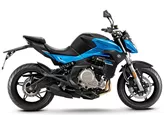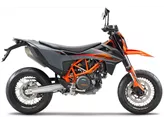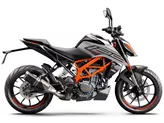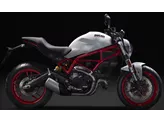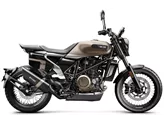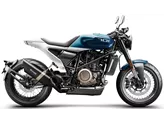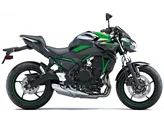Kawasaki Z650 2017 vs. KTM 690 Duke 2012

Kawasaki Z650 2017

KTM 690 Duke 2012
Overview - Kawasaki Z650 2017 vs KTM 690 Duke 2012
The Kawasaki Z650 2017 and the KTM 690 Duke 2012 are both popular naked bikes with their own unique features and strengths.
In terms of engine power, the Kawasaki Z650 2017 has a slightly lower power output of 68.2 HP compared to the KTM 690 Duke 2012 which has 70 HP. However, the difference is minimal and both bikes offer sufficient power for their respective models.
When it comes to torque, the Kawasaki Z650 2017 has a torque of 65.7 Nm, while the KTM 690 Duke 2012 has a torque of 70 Nm. Again, the difference is not significant, but the KTM 690 Duke 2012 has a slight advantage in terms of torque.
In terms of cylinders, the Kawasaki Z650 2017 has 2 cylinders, while the KTM 690 Duke 2012 has a single cylinder. Having two cylinders generally provides smoother power delivery and better overall performance, but the KTM 690 Duke 2012 compensates for this with its higher torque.
Both bikes have liquid cooling systems, which are efficient in maintaining optimal engine temperature during long rides or in hot weather conditions.

Kawasaki Z650 2017
In terms of displacement, the Kawasaki Z650 2017 has a displacement of 649 ccm, while the KTM 690 Duke 2012 has a displacement of 690 ccm. The KTM 690 Duke 2012 has a slightly larger engine displacement, which can result in slightly more power and torque.
The suspension systems of both bikes differ slightly. The Kawasaki Z650 2017 has a telescopic fork front suspension, while the KTM 690 Duke 2012 has an upside-down telescopic fork front suspension. The upside-down telescopic fork is generally considered to be more advanced and provides better handling and stability.
In terms of the chassis, the Kawasaki Z650 2017 has a steel frame, while the KTM 690 Duke 2012 has a chromium-molybdenum frame. Both frames are tubular in design and offer good rigidity and stability.
The braking systems of both bikes also differ. The Kawasaki Z650 2017 has double piston front brakes with petal technology, while the KTM 690 Duke 2012 has four piston front brakes with radial technology. The four piston front brakes on the KTM 690 Duke 2012 are generally considered to provide better braking performance and control.

KTM 690 Duke 2012
Both bikes are equipped with advanced rider assistance systems. The Kawasaki Z650 2017 has ABS, while the KTM 690 Duke 2012 has Ride by Wire technology. ABS provides enhanced safety by preventing wheel lock-up during braking, while Ride by Wire technology improves throttle response and control.
In terms of dimensions and weights, both bikes have similar front and rear tire widths and diameters. The Kawasaki Z650 2017 has a slightly shorter wheelbase of 1410 mm compared to the KTM 690 Duke 2012 which has a wheelbase of 1466 mm. The seat height of the Kawasaki Z650 2017 is 790 mm, while the KTM 690 Duke 2012 has a higher seat height of 835 mm. The Kawasaki Z650 2017 also has a larger fuel tank capacity of 15 liters, compared to the KTM 690 Duke 2012 which has a fuel tank capacity of 14 liters.
In terms of strengths, the Kawasaki Z650 2017 offers even power delivery, a sporty chassis, compact dimensions, and a negative display. On the other hand, the KTM 690 Duke 2012 is known for its extremely fast yet smooth performance, precise and manageable chassis, and high agility.
In terms of weaknesses, the Kawasaki Z650 2017 may be a little too small for tall people, while the KTM 690 Duke 2012 may take some getting used to when driving bends in the road.
Overall, both the Kawasaki Z650 2017 and the KTM 690 Duke 2012 are impressive naked bikes with their own unique features and strengths. The choice between the two ultimately depends on the rider's preferences and priorities.
Technical Specifications Kawasaki Z650 2017 compared to KTM 690 Duke 2012
Pros and Cons in comparison
Pros and Cons in comparison
Kawasaki Z650 2017

The Kawasaki Z 650 is the tip of the middle class for small male and female riders. On its compact dimensions, you probably won't feel comfortable as a giant. Heart-warming feelings, however, come from the engine, which delights with a very smooth pull. On the chassis side, a Kawasaki-typical tight set-up was chosen, which finds a great compromise in everyday use. The negative display is very easy to read and is reminiscent of its predecessor, the ER-6n - very nice!
KTM 690 Duke 2012
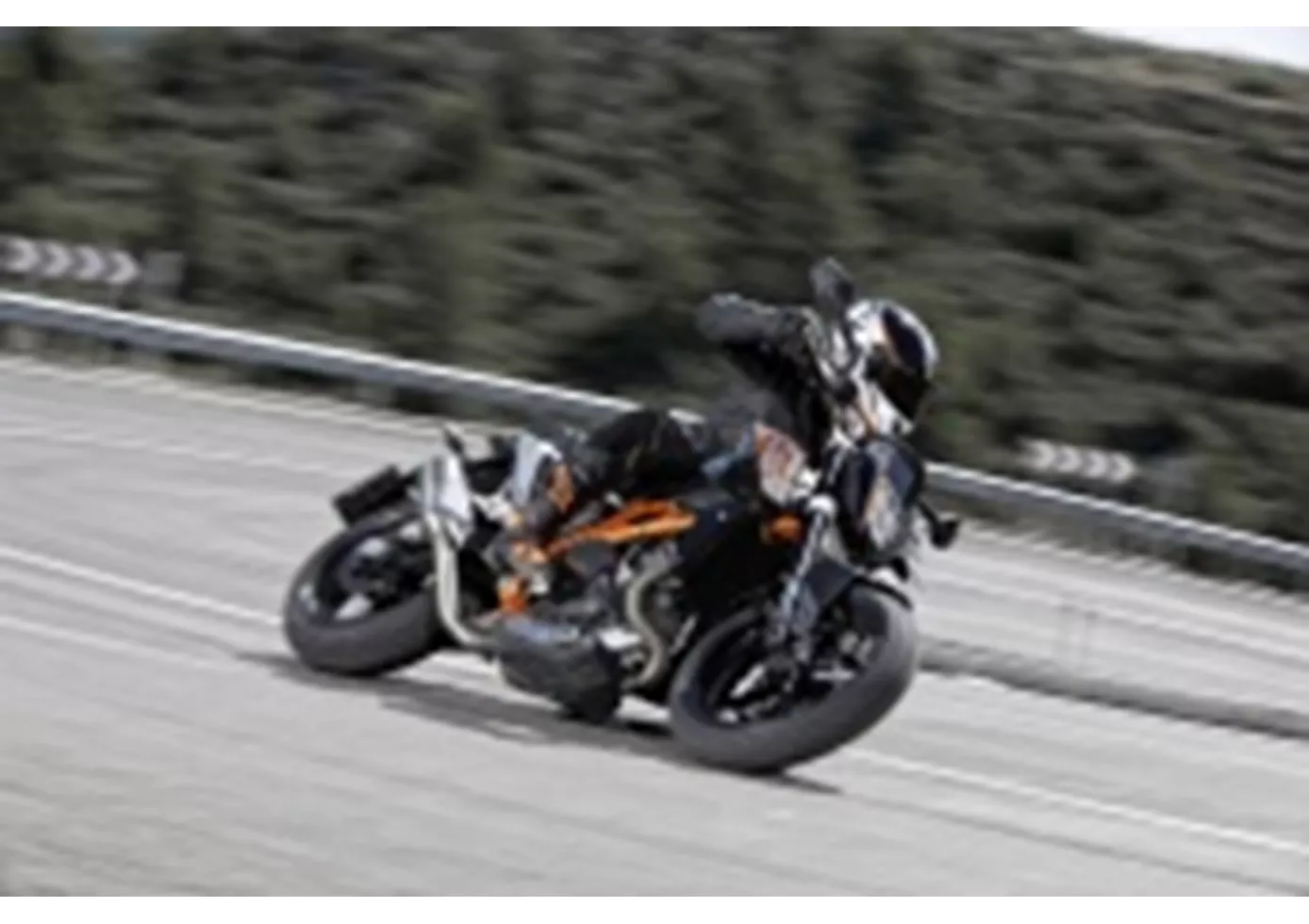
More than a decade after its launch, the KTM 690 Duke remains a fascinating bike with its own character. The attempt to turn the rebellious Duke into a bike with more mass appeal has proven to be a successful strategy. The combination of an outstanding LC4 engine, direct handling and good value for money continues to make it an attractive option for riders looking for something special. Although newer twin-cylinder models are superior in terms of smooth running and comfort, the 690 Duke offers an immediacy and character that only a large single-cylinder can deliver. As a used motorbike, it has proven to be surprisingly stable in value and durable - provided you pay attention to regular maintenance.
Price Comparison Avarage Market Price Kawasaki Z650 vs KTM 690 Duke
There are a few key differences between a Kawasaki Z650 2017 and a KTM 690 Duke 2012. In terms of price, the actual average price of a Kawasaki Z650 2017 is about 13% higher. A Kawasaki Z650 2017 experiences a loss of 340 USD in one year and 520 USD in two years of ownership. This is offset by a loss of 190 USD and 660 USD for a KTM 690 Duke 2012. Compared to KTM 690 Duke 2012 there are less Kawasaki Z650 2017 bikes available on the 1000PS.de Marketplace, specifically 11 compared to 16. It takes less time to sell a KTM 690 Duke with 50 days compared to 76 days for the Kawasaki Z650. Since model year 2017 1000PS.de editors have written 31 reviews for the Kawasaki Z650 and 29 reviews for the KTM 690 Duke since model year 2008. The first review for the Kawasaki Z650 was published on 11/8/2016 and now has more than 25,000 views. This compares to more than 14,800 views for the first review on KTM 690 Duke published on 9/28/2007.



